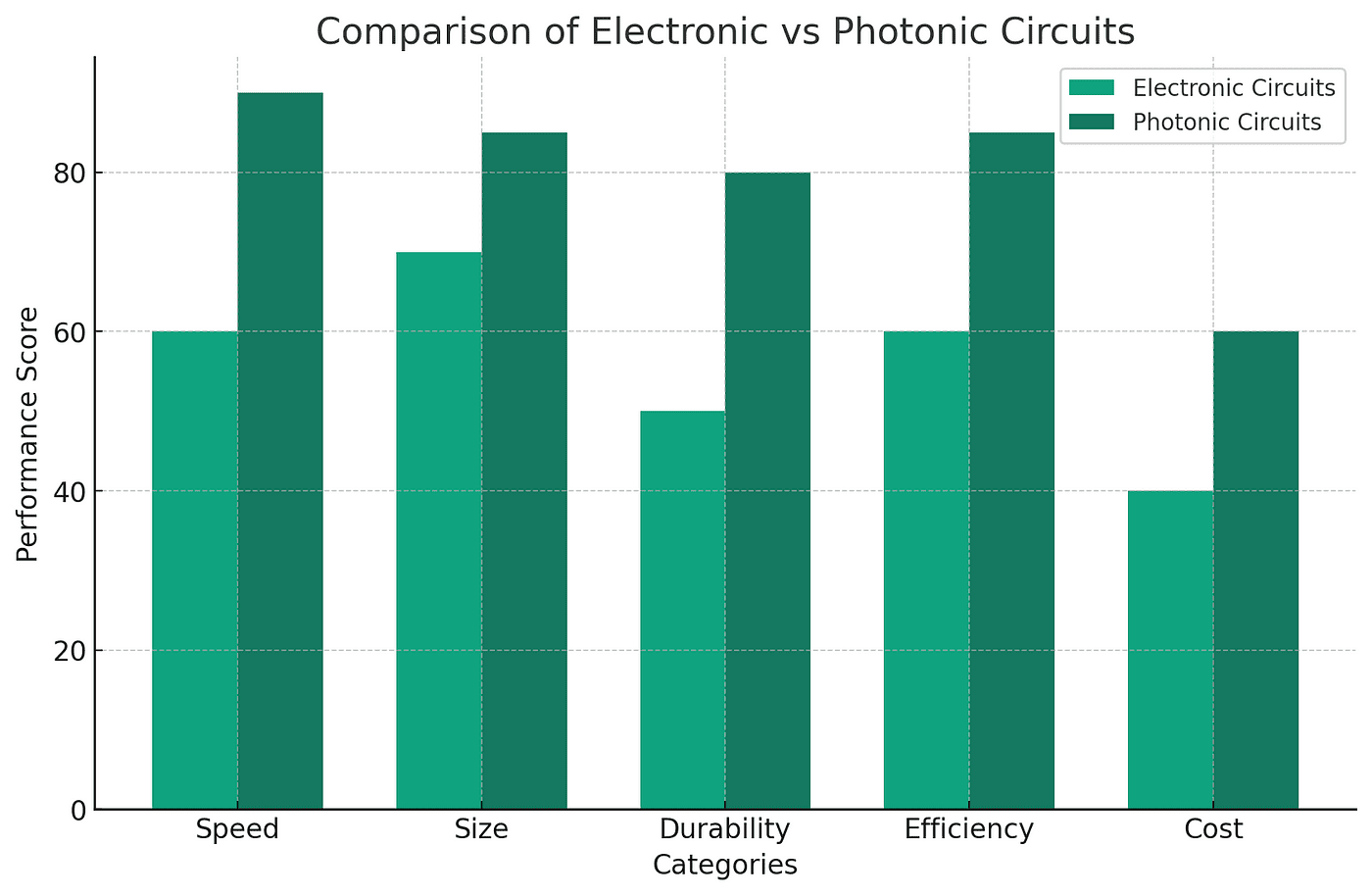
Space, the final frontier, has always captivated our imagination. But did you know that the technology we send into space, like satellites and space probes, is constantly evolving? One of the most exciting developments in this field is the use of photonic circuits. Unlike regular circuits that use electrons, photonic circuits use light (photons) to function. This might sound like something out of a Star Wars movie, but it’s real and it’s happening now!
Why Photonic Circuits Matter
You might be wondering, “Why use light in circuits?” The answer is simple: light is fast, really fast. It travels at about 299,792 kilometers per second! By using light in circuits, we can transmit data at incredible speeds. This is super useful in space, where communicating quickly and efficiently is crucial. Imagine being able to send and receive messages from Mars in minutes instead of hours!
Shrinking Down Technology
Another challenge in space technology is size. Space is at a premium in spacecraft, so everything needs to be as small as possible. This is where the new research in silicon photonic modulators and circuits comes in. Scientists are working on making these light circuits smaller and smaller, without losing their effectiveness. It’s like trying to pack your entire bedroom into a suitcase — challenging but incredibly useful if you can do it!
Toughening Up for Space Travel
Space is a harsh environment. There’s no air, extreme temperatures, and lots of radiation. All these can damage regular electronic circuits. But guess what? Photonic circuits are much tougher. They can handle the harsh conditions of space much better than their electronic counterparts. It’s like comparing a rugged, all-terrain vehicle to a regular car. The all-terrain vehicle (the photonic circuit) is built to survive tough conditions.
The Impact of Photonic Technology on Space Exploration
So, what does all this mean for space exploration? A lot! With smaller, faster, and tougher circuits, we can build better spacecraft. These spacecraft can travel further and send back more information. We could explore distant planets, asteroids, and maybe even find new life forms! It’s like having a super-powered telescope and a super-fast computer rolled into one.
Beyond Space
The benefits of this technology aren’t limited to space. Here on Earth, we could use these advanced photonic circuits in everything from computers to medical devices. They could make our internet faster, help doctors diagnose illnesses quicker, and maybe even lead to new inventions we haven’t even thought of yet.
A Small Step for Circuits, A Giant Leap for Mankind
The development of silicon photonic modulators and circuits is more than just a scientific achievement. It’s a step towards a future where space travel is more efficient, and technology on Earth is more advanced. We are on the brink of a new era in space exploration, and it’s all thanks to these tiny circuits of light.
How Photonic Circuits Work
To understand photonic circuits, let’s first understand how traditional electronic circuits work. Electronic circuits use electrons to carry information. These electrons move through wires, much like cars on a highway. Photonic circuits, on the other hand, use photons — particles of light. These photons travel through special materials called waveguides, similar to how fiber optic cables work. The beauty of photons is that they don’t interact with each other as much as electrons do, which means less traffic jams and faster information flow!
Advantages Over Traditional Electronics
Photonic circuits have several advantages over traditional electronics. Firstly, they’re much faster. Because light travels faster than electricity, photonic circuits can process and transmit data at incredible speeds. Secondly, they’re more efficient. Photonic circuits generate less heat than electronic circuits, making them more energy-efficient and less prone to overheating. This is especially important in space, where cooling systems are limited.

The graph above provides a visual comparison between traditional electronic circuits and the newer photonic circuits in five key areas: Speed, Size, Durability, Efficiency, and Cost. Each category is scored out of 100, with higher scores indicating better performance.
- Speed: Photonic circuits score significantly higher due to their ability to transmit data faster using light.
- Size: Photonic circuits are also smaller, making them ideal for space applications.
- Durability: They are more durable, especially in harsh space conditions.
- Efficiency: Photonic circuits are more energy-efficient, generating less heat.
- Cost: While currently more expensive, advancements in technology may reduce costs in the future.
Challenges in Photonic Circuit Development
Developing photonic circuits isn’t without challenges. One major challenge is integrating them with existing electronic systems. It’s like trying to get two different languages to work together seamlessly. Another challenge is manufacturing. Making photonic circuits requires highly specialized materials and processes, which can be expensive and complex.
Why Silicon?
Silicon is a key material in the development of photonic circuits. It’s abundant, relatively inexpensive, and most importantly, it’s a well-understood material in the technology industry. Silicon also has excellent optical properties, which makes it great for guiding light in photonic circuits.
Innovations in Silicon Photonic Technology
Recent advancements in silicon photonic technology have led to smaller, more efficient, and more versatile circuits. Researchers are continually finding ways to improve how silicon interacts with light, leading to even more powerful and compact photonic circuits.
Transforming Communication and Computing
The impact of photonic technology extends far beyond space exploration. On Earth, it could transform the way we communicate and compute. Photonic circuits could lead to ultra-fast internet speeds, making activities like streaming, gaming, and video conferencing much smoother. They could also revolutionize computing, leading to faster and more powerful computers.
Medical and Environmental Applications
In medicine, photonic technology could lead to advanced diagnostic tools, enabling doctors to detect diseases earlier and more accurately. In environmental monitoring, photonic sensors could detect pollutants at incredibly low concentrations, helping us to better understand and protect our environment.
Educational and Research Opportunities
For students and researchers, the advancement in photonic technology opens up a world of opportunities. It offers a new frontier in science and engineering, encouraging innovation and creativity. Schools and universities could introduce more programs focused on photonics, preparing the next generation of scientists and engineers.
Lighting the Way to the Future
In summary, silicon photonic modulators and circuits are not just a scientific curiosity. They are a beacon of progress, illuminating the path to a brighter, faster, and more efficient future. As we continue to harness the power of light in technology, we open up new possibilities for exploration, communication, and innovation. The future is bright, and it’s powered by photons.
About Disruptive Concepts
Welcome to @Disruptive Concepts — your crystal ball into the future of technology. 🚀 Subscribe for new insight videos every Saturday!







